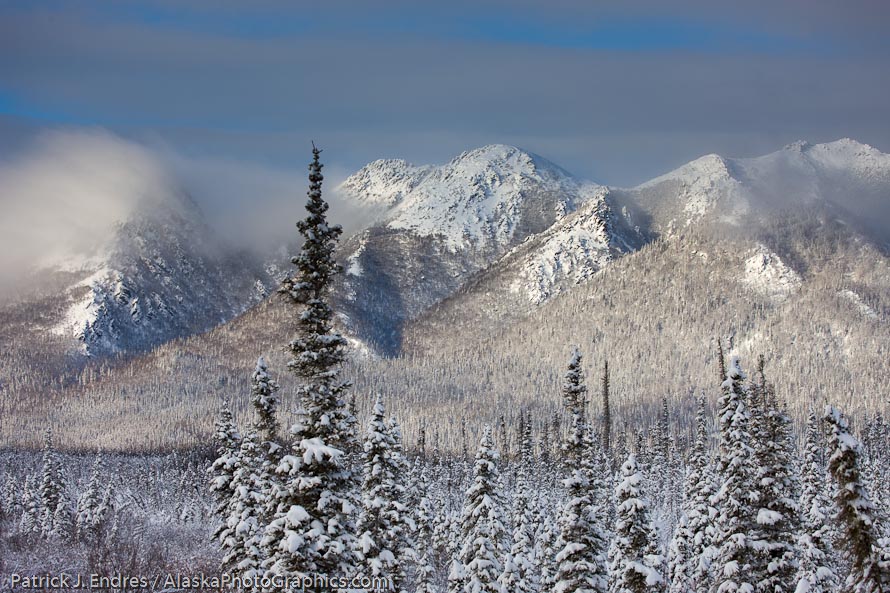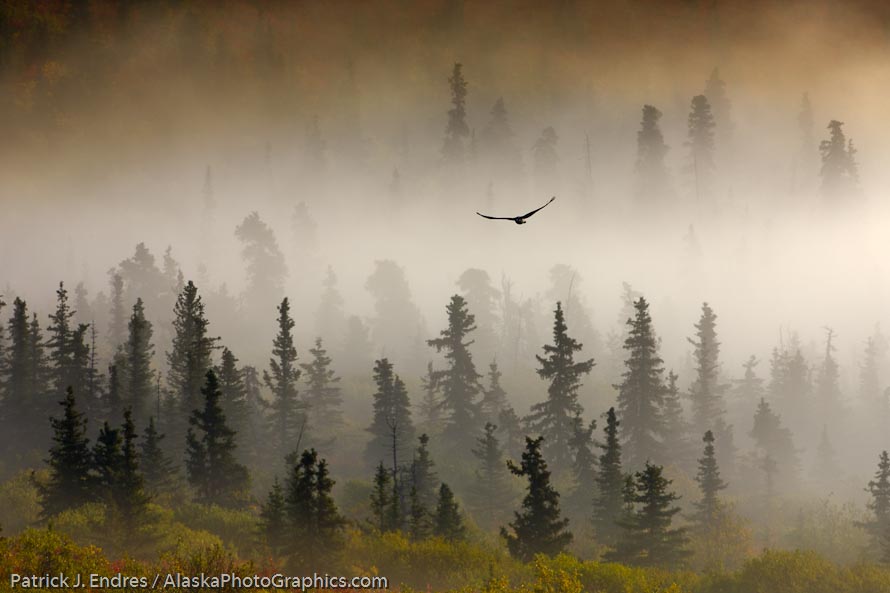Where to Photograph in Alaska
I’m often asked a difficult question: Where is your favorite place to photograph in Alaska? It’s tough to answer because Alaska’s regional diversity is part of its lure and fascination. Sampling from one region makes the other’s uniqueness more prominent. I like winter because of summer, and I like summer partly because of winter. Alaska is huge and change and variation make travel across the landscape distinctive and remarkable.
Wildlife varies considerably depending on the region. Animals in the Arctic are different from those in Southeast Alaska’s marine waters, both of which are astonishing in their own right.
Instead of naming a favorite place, I’ll list a few locations I enjoy photographing. They are not secret spots in any measure, relatively well known, but they are that for a reason.
Brooks Falls, Katmai National Park
I like the topographical relief of the Brooks Falls area, the nearby mountains, the aqua-blue water of Naknek lake, the sunrise orientation, the diversity of wildlife, and yes, of course, the tremendous congregations of brown bears. Access to Brooks Lodge is made via commercial jet to King Salmon and then by float plane to Brooks Lodge, situated on the shores of Naknek Lake. A day trip directly to Brooks from the Anchorage or Homer region is increasingly popular. While this might provide a quick chance to see the bears, you miss the excellent light of early morning and late evening. I prefer to go for sufficient time to get familiarized with the animals and their behavior and sample the diversity of weather. The Brooks Campground is convenient, but the spots go quickly during prime summertime salmon runs, which bring the bears.

Brown bears defend fishing territory in the Brooks River, Katmai National Park, southwest Alaska.

Brown bears fish for red salmon at Brooks Falls, Brooks River, Katmai National Park, southwest, Alaska.

Brown bears fish for red salmon on the falls of Brooks River, Katmai National Park, southwest, Alaska.

Brown bear wades in the Brooks River, sunrise over Naknek Lake, Katmai National Park, Alaska.

Brown bear peers through sedge grass, Katmai National Park, Alaska.
Prince William Sound
The long fjords choked with lush green hillsides are fantastic in this sheltered waterway of Prince William Sound in southcentral Alaska. Glaciers are thick and active, dumping huge icebergs into the sea. The weather can be wet but not as severe as in southeast Alaska. Its coastal landscapes and wildflower meadows are amazing. The bird life, marine wildlife, and the interface of human participation through kayaking and/or maritime industry make it intriguing. It’s growing in popularity and the number of visitors, mainly due to the road access available to public vehicles through the tunnel from Portage to Whittier. The sound can also be accessed from Valdez or Cordova on the northern and eastern shores. The Spring birding festival, held in May in Cordova, is a fascinating and, at times, mind-blowing experience. Especially if you time your visit to see the hundreds of thousands of shorebirds that migrate through.

Columbia glacier icebergs, Lupine wildflowers, northern Prince William Sound, Southcentral, Alaska.

Harbor seals on glacier icebergs, Nassau fjord, Chenega glacier, Western Prince William Sound, Alaska

Flocks of shorebirds, dominated by Western sandpipers, flock to the shores of Hartney Bay, Copper River Delta, and Prince William Sound, Alaska, to refuel during their migration to summer.
The Brooks Range
The Brooks Range is a massive region encompassing the northernmost continental divide that separates Alaska’s Interior from the expansive Arctic North Slope. The remote, sparsely populated area is extreme, austere, beautiful, and rugged–home of endless summer light and famous mosquitoes! Access can be made on foot from the Dalton Highway, or you can fly into several areas for extended backpacking, hiking or river travel. To get to the more remote regions of the Brooks Range, including the Gates of the Arctic National Park and the Arctic Refuge, I have used the reliable air taxi service, Coyote Air Service, based in Coldfoot. The pilots, Dirk and his wife, Danielle, know the area exceptionally well: www.flycoyote.com

Aerial of the Davidson mountains of the Brooks Range, Arctic National Wildlife Refuge, Alaska.

Winter landscape after fresh snowfall on the foothills of the Brooks mountain range, Arctic, Alaska.

Caribou on the Arctic tundra north of the Brooks Range, Arctic, Alaska
Denali National Park
I have spent decades photographing in Denali National Park. It is one of Alaska’s most widely visited destinations for a reason—dramatically scenic and rich with wildlife, including moose, grizzly bears, Dall sheep, wolves, caribou and more. The Denali Park Road moves through four mountain passes, which parallel rivers with grand vistas—all in just 90 miles! No other road system in Alaska delivers such scenic and wildlife diversity in a short distance. A bus shuttle system provides access into the park. Overnight back country camping requires special permits easily obtained at the Visitor’s Center. The landscapes and wildlife can be photographed on foot hiking or from a bus, the latter more restrictive.

Raven flys through spruce trees in the morning fog, Denali National Park, interior, Alaska.

Bull caribou travel across a mountain ridge in the Alaska range mountains, Denali National Park, interior, Alaska.

Partially obscured Denali (North America’s highest mountain – 20,320ft), Wonder Lake, Denali National Park, interior, Alaska.
